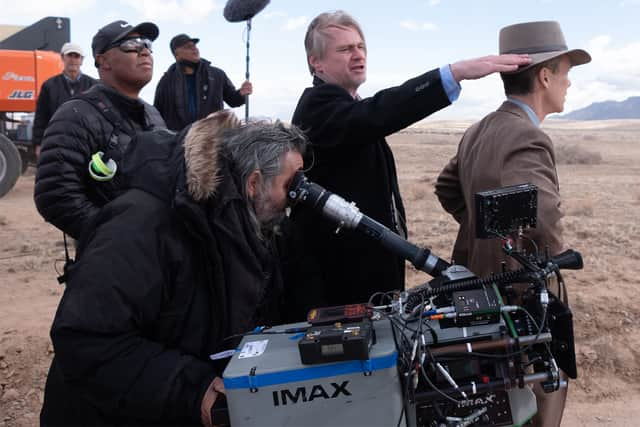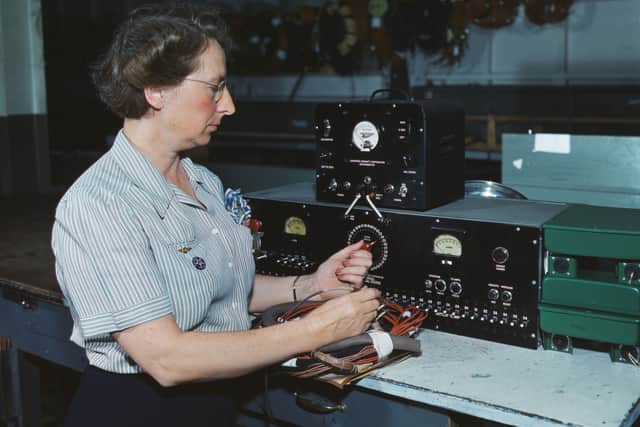What was life like in the US during when Christopher Nolan’s ‘Oppenheimer’ is set?
and live on Freeview channel 276
Christoper Nolan’s next cinematic thriller is nearly upon us. Oppenheimer stars Cillian Murphy in the film’s lead role as J. Robert Oppenheimer - the man credited for his role in the Manhattan Project and the birth of the atomic bomb.
The film follows the theoretical physicist as the world’s first nuclear weapons are developed and centres on the personal toll this takes on the ‘father of the atomic bomb.’
Advertisement
Hide AdAdvertisement
Hide AdA period drama like projects he’s worked on before, Oppenheimer will of course be set in the US during the Second World War. But while many are aware of life on the frontline during the war from films and TV, life on the home front is depicted much less.
So what can we expect from Oppenheimer and the world it is set in which Nolan will undoubtedly give multiple nods to?


The home front in the US is fairly reminiscent of life in the UK during the same time, but still varied to a large degree.
A large difference is how the US didn’t face a direct attack during World War II - apart from Pearl Harbor in 1941, of course - whereas here in the UK, the threat of air raids was present very frequently during the conflict.
Advertisement
Hide AdAdvertisement
Hide AdIt was during 1942 that a rationing program was first set up in the US. Limits were placed on the usage of gas, food consumption, and the clothing people could buy.
The National World War II Museum details the way rationing was sold to the US public: “Eating leftovers became a patriotic duty and civilians were urged to grow their own vegetables and fruits. Millions of "Victory gardens," planted and maintained by ordinary citizens, appeared in backyards, vacant lots, and public parks.
“They produced over 1 billion tons of food. Americans canned food at home and consulted "Victory cookbooks" for recipes and tips to make the most of rationed goods.
Recycling also became a big initiative during the war in the US - specifically copper and the fact it was needed to produce armaments. One way around this was that the US Mint began producing pennies out of steel instead of copper in 1943.
Advertisement
Hide AdAdvertisement
Hide AdOn HISTORY.com, it is described how people “conducted drives for the collection of scrap metal, aluminium cans and rubber, all of which were recycled and used to produce armaments.”
An unusual item that was also recycled during the war was household waste fat. This was so it could be used to make glycerine = a key component in the explosives of many types of ammunition.
The mobilisation of the economy and workforce is also clearly seen in the role women played in the production of munitions.
As men joined the armed forces, it paved the way for women to secure jobs as welders, electricians, and other labouring jobs - hence the term ‘Rosie the Riveter’.
Advertisement
Hide AdAdvertisement
Hide AdMoreover, and more unique to the US, the war effort at home led to increased opportunities for Black Americans. With the civil rights act still decades away, Black Americans were forced to live heavily segregated lives.
A victory at home was perhaps best symbolised by President Rosevelt signing an executive order to create the Fair Employment Practices Committee which investigated workplace discrimination.
As in the UK, it is clear how civilians on the home front pulled together and made sacrifices to ensure the victory of the Allies abroad.
This was perhaps echoed in the Navy Day Speech Franklin D. Roosevelt gave in October 1944.


Advertisement
Hide AdAdvertisement
Hide AdHere he said: "I need not repeat the figures. The facts speak for themselves.... These men could not have been armed and equipped as they are had it not been for the miracle of production here at home.
“The production which has flowed from the country to all the battlefronts of the world has been due to the efforts of American business, American labour, and American farmers, working together as a patriotic team."
Roosevelt stated in 1940 that his goal was to build 50,000 aircraft a year. In 1944, the US made almost double that figure and led the world in arms production.
Planes like the Boeing B-29 - which would eventually be used to drop the atomic bombs Oppenheimer helped create on Hiroshima and Nagasaki - were produced in their thousands during the conflict, according to the World War II Database.
Advertisement
Hide AdAdvertisement
Hide AdAs President Truman led the nation from January 1945 following Roosevelt’s death, Christopher Nolan’s latest film is likely to feature Truman more as Gary Oldman has been listed as the actor playing the 33rd President of the United States.
It was also Truman that authorised the use of the atomic bomb anytime after August 3, 1945, after leaders in Japan rejected proposals for peace.
On August 6, the first atomic bomb nicknamed ‘Little Boy’ was dropped on Hiroshima - an act which still carries global implications today in a world run by nuclear superpowers.
Comment Guidelines
National World encourages reader discussion on our stories. User feedback, insights and back-and-forth exchanges add a rich layer of context to reporting. Please review our Community Guidelines before commenting.
